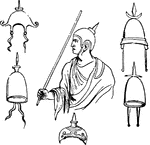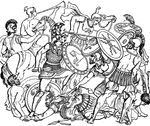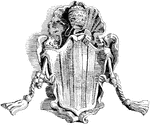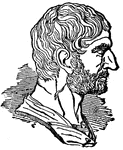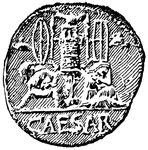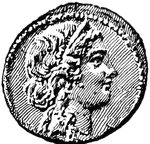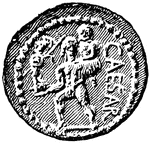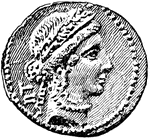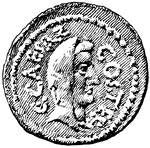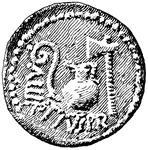
A Roman Soldier, or Legionary, with a Short Javelin and Shield
Illustration of a Roman soldier, also called a legionary, carrying a shield, short sword, and a short…

Acanthus
"A genus of small herbaceous plants of southern Europe and Africa; they have spinosely toothed leaves,…
!["In order that [Alaric's] body might be saved from the gaze of the vulgar and the rage of his foes, he gave direction that it should be buried in the bed of the river Busentinus."—Ridpath, 1885](https://etc.usf.edu/clipart/78900/78952/78952_alaricburial_mth.gif)
The Burial of Alaric in the Bed of the Busentinus
"In order that [Alaric's] body might be saved from the gaze of the vulgar and the rage of his foes,…

Amphora
"A jar with two handles; Among the Greek and Roman, a vessel, usually tall and slender having two handles…
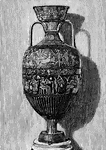
Amphora
"A jar with two handles; Among the Greek and Roman, a vessel, usually tall and slender having two handles…

Roman Amphora
This Roman Amphora is unpainted made out of red clay. The neck of this vase is narrow with a thick rim.

Roman Amphora
This Roman Amphora is an unpainted vase made out of yellow clay. It was found in the area near Aquileia,…
Roman Amphora
This Roman Amphora is made out of iridescent glass and was found in Pompeii, Ancient Rome.
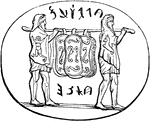
Ancilia
"According to the ancient authorities, it was made of bronze, and its form was oval, but with the two…
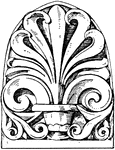
Roman Antefix
The Roman antefix is is found in the temple of Jupiter Stator in Rome, Italy. This design is found on…

Antinous
"It was during Hadrian's sojourn in this country that his favorite, the beautiful Birthynian named Antinous,…

Marcus Aurelius Antoninus
"Marcus Aurelius Antoninus stands almost alone in the history of the world as a philosopher and philanthopist…
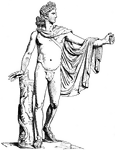
Apollo of the Belvedere - Front View of Statue
Illustration of the famous statue Apollo Belvedere. Created circa AD120-140, the statue depicts Apollo…

Apoxyomenos
An ancient sculpture representing an athlete using a strigil to scrape sweat and dust off his body.
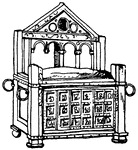
Chair of St. Peter Arm-Chair
The chair of St. Peter was made out of wood with ivory reliefs illustrating the story of Hercules in…

Roman Arm-Chair
The Roman Arm-chair had a decoration symbolic of Ceres, the Roman goddess of growing plants.
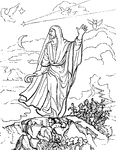
Roman augur
"Represents a Roman augur, with his litmus or divining staff, observing the signs in the heavens." —…
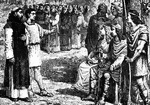
Augustine and Ethelbert
"Ethelbert met Augustine in the open air, under a tree at Canterbury, and heard him tell about the true…

Antique Roman balance from Pompeii
This antique Roman balance from Pompeii has one pan that hangs from a rod.
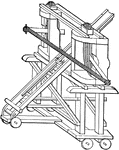
Ballista
The Ballista is a device for throwing large darts very accurately. The Roman Ballistas threw stones…

Banqueting room
"The Roman people reclined at their meals. On each couch there were commonly three persons. They lay…

Roman Base
This Roman base is a design found in the Capitalone museum of Rome, Italy. It is a design of leaves…

Roman Base
This Roman base is found in the Temple of Concord in Rome, Italy. It is a natural method of decoration,…
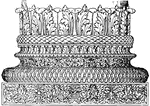
Roman Base
This Roman base is found in the Baptistery of Constantinople, Rome, Italy. It is a natural method of…

Basilica of Old St Peter
"Sectional view of the old Basilica of St. Peter, before its destruction in the 16th century." —…

Roman Bedstead
This Roman bedstead had a Pompeian vase-painting. It included a head and foot board. It was made out…
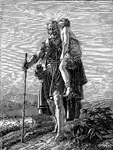
Blind Belsarius
Belsarius was ordered to have his eyes put out, and was reduced to a homeless beggar.

Brioude Bridge
"The old bridge of Brioude across the Allier in France. Montfaucon and Seguin speak of this as a Roman…
!["After a successful summer campaign, [Caesar] made his way to the coast and cross over into Britain. He then withdrew into his winter-quarters in Gaul, but in the following year returned into the island, defeated the British Celts under their king Cassivellaunus, and reduced the country to a dependency, compelling the Britons to pay tribute and give hostages."](https://etc.usf.edu/clipart/78900/78943/78943_landing_01_mth.gif)
Landing of the Romans in Britain
"After a successful summer campaign, [Caesar] made his way to the coast and cross over into Britain.…
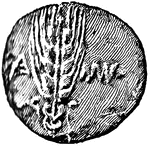
British Coin
British coin of the time period of the Roman invasion in the Gallic War, B.C. 54. Front.
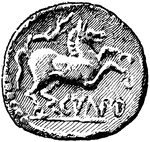
British Coin
British coin of the time period of the Roman invasion in the Gallic War, B.C. 54. Back.
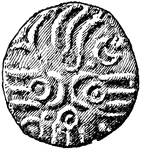
British Coin
British coin of the time period of the Roman invasion in the Gallic War, B.C. 54. Front.
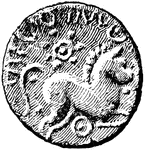
British Coin
British coin of the time period of the Roman invasion in the Gallic War, B.C. 54. Back.

Byzantine court
"Constantine, the first Christian emperor, removed the capital of the world-empire from Rome to Byzantium,…



